You know those weeks when your inbox turns into a full-blown haunted house?
That was me last October—thirty unread DMs, three emergency “please read my birth chart right now” texts, and a voice memo from a client whispering (I swear) through actual tears.
That’s when I was reminded how much spiritual tools matter.
“The most precious gift we can offer others is our presence.” — Thich Nhat Hanh
But what happens when you can’t be present? When life, bandwidth, or just plain burnout means you can’t offer 1:1 support?
That’s when those quiet rituals stop being optional… and start becoming sacred.
I’ve spent years curating the ones that actually work without me holding your hand. These aren’t glittery distractions or shelf-pretty décor. These are energetic allies with teeth.
I’ll even tell you about the time a stranger in Lisbon accidentally taught me how to read a pendulum—and saved me from a very expensive dating mistake.
If you’re ready to discover the spiritual tools that keep working when I can’t, come see what I recommend in my go-to toolkit.
Top Takeaways
Before you scroll further, here are 5 unexpected truths that might just change how you think about self-guided energy work forever.
- Crystals as energetic allies can hold your intention like emotional flash drives—powerful even without rituals.
- Tarot cards tell truths you’re not asking—if you pull The Tower three times, it’s not the deck that’s confused.
- Pendulums reflect your gut, not fate—they’re like body language you didn’t know you were fluent in.
- Meditation needs anchors, not discipline—like training a puppy, your mind learns through gentle repetition, not force.
- Affirmative prayer rewires belief—speak it like it’s already real and your nervous system starts acting like it is.
1. Crystals: My Grounding Force When I’m Mentally Elsewhere
I’ll be honest—when someone rolls their eyes at crystals, I get it. A decade ago, I thought they were overpriced paperweights too.
But here’s what changed my mind: They work on a molecular level—just not always in the way you expect.
Crystals like clear quartz aren’t magical wands. They’re memory keepers. You program them with intention—kind of like giving your goals a permanent residence.
I’ve had clients put a tiny rose quartz in their bra during grief counseling. I carry citrine when I’m manifesting money. Amethyst has sat next to every deck I’ve ever pulled from.
They’re not spiritual band-aids. They’re frequency anchors—mini co-therapists made of compressed Earth and ancient pressure.
That’s why I often recommend starting with a 30 PCS kit—small, specific, and beginner-friendly.
Key Takeaway:
Crystals don’t do the work for you. But they help you remember to keep showing up, which is sometimes the whole point.
Tip:
Start with one stone, one goal, and one place—pocket, altar, pillowcase—just pick somewhere your energy already lives daily.
2. Oracle and Tarot Cards: The Tool That Taught Me to Listen
Tarot was my first love. But I didn’t get good at it until I stopped treating it like a quiz—Spiritual Blossom was actually one of the first places I saw cards read with emotional nuance.
Of all the spiritual tools I’ve recommended over the years, decks remain one of the most empowering when used solo.
These days, when I’m too booked to meet with someone 1:1, I send them to their own deck—and tell them to stop asking yes/no questions.
I use oracle cards for themes, moods, energy weather. I use tarot when I need narrative structure—what’s rising, climaxing, collapsing.
Cards don’t predict. They reflect. What you pull is often what you’re avoiding.
One client pulled The Tower three times in a week.
She kept reshuffling, even after chatting with Kasamba psychics for outside perspective. (You can guess how that ended: a breakup and a rebirth, all in 10 days.)
Want to go deeper on the energy dynamic when a Taurus man pulls away? That’s when I tell my readers to explore layered spreads, or dive into resources like this psychic reading guide that explain how different intuitive tools work together.
These cards? They tell the truth faster than most exes.
Key Takeaway:
Tarot and oracle cards aren’t about the future. They’re about the now—and what your intuition’s been quietly screaming all along.
Tip:
Do a single-card pull every morning with no question. Let the message speak before your mind gets loud.
3. Pendulums: The Tool That Saved Me from a Bad Date in Lisbon
This story still makes me laugh.
I was in Lisbon, café-hopping with a charming guy named (not really) Marco, when I got that feeling—gut says “run,” but logic’s sipping espresso.
I excused myself, pulled out my pendulum under a jacaranda tree, and asked: Is this someone I should trust?
The thing swung ‘no’ like it had something to prove. A few hours later, I double-checked with a friend who reads on Purple Garden, and—yep—same red flag.
Hours later, Marco casually dropped that he believed astrology was a scam and women who used spiritual tools were “cute but gullible.”
Blocked.
Pendulums aren’t spooky. They’re somatic. Your hand, your energy, your knowing. It’s just a physical way to confirm what your subconscious already clocked.
I tell clients: don’t ask it to decide your life. Ask it to validate your truth—MysticSense sessions can help if you’re stuck on what to ask.
Want to assess energy shifts during goals of care conversations or clear up anxiety spirals? A pendulum can be a surprisingly honest sidekick.
Key Takeaway:
Pendulums aren’t about magic—they’re about energetic alignment. Your body always knows. The pendulum just speaks it out loud.
Tip:
Practice with clear yes/no questions when calm, so your pendulum reflects you, not your anxiety.
4. Sound Healing: When Talking Feels Too Loud
Not everyone can sit still for meditation. (I sure couldn’t for years.)
That’s where sound healing came in—like a spa day for my nervous system.
The first time I tried singing bowls, I was shocked at how quickly my mind quieted. It wasn’t a chant. It wasn’t breathwork. It was frequency—pure, ancient, and deeply somatic.
Some of my clients use tuning forks to clear their spaces before journaling, while others turn to Oranum readers for energetic clarity before rituals.
A single note can vibrate through the noise in your head and hit places that words just can’t.
Think of sound as a spiritual care provider. No language required, just resonance.
For those navigating palliative care programs, sound becomes not just a soothing aid—but a dignified pause in chaos.
Key Takeaway:
Sound tools bypass logic and speak to the body’s deeper rhythms. When words are too much, vibration does the work.
Tip:
Try 432 Hz or 528 Hz tones before sleep for calm. Use live instruments when possible—they hit deeper than recordings.
5. Aromatherapy: Breathing in Peace When Life Feels Loud
Some people meditate in silence. Me? I need scent to ground me—especially on days when my brain feels like a browser with 74 open tabs.
Essential oils aren’t just “spa vibes.” They’re neurological shortcuts—and one of the most underrated spiritual tools in my daily practice.
Lavender drops my cortisol within seconds. Frankincense? That’s my go-to when I’m doing inner work or a difficult advance care planning discussion with a client. Peppermint pulls me back into my body when my energy’s scattered across three time zones.
One client swears by White Sage and Palo Santo in her morning ritual. Another spritzes her wrist with bergamot before setting goals for her day.
Aromatherapy doesn’t require belief. It requires presence—and a working nose.
Whether you’re prepping a sacred space or just trying to not lose it before a big Zoom call, scent shifts things. Fast.
Key Takeaway:
Scents don’t just smell nice—they rewire emotional states. Aromatherapy can anchor your energy when the mind feels chaotic.
Tip:
Pick one scent that calms you, and make it part of your daily rhythm—like brushing teeth, but for your mood.
6. Journaling: When Your Soul Has Something to Say
There are days when I don’t want advice, readings, or even clarity.
I just want to unload.
Journaling is the most underrated of all spiritual tools. It’s cheap, it’s private, and it’s incredibly powerful. I’ve seen it shift entire perspectives—sometimes within a single page.
One of my clients, Jenna, kept a dream journal for 30 days. On day 17, she wrote about a bridge collapsing. Three days later, she left a job that had been draining her spirit for years.
She didn’t need interpretation. She needed to see it on paper to know.
You don’t need a beginner-friendly book or a fancy planner. Just a notebook, a pen, and the willingness to meet yourself in real time.
And if your goal is to escape a mindset trap, nothing exposes it faster than your own unfiltered thoughts.
Key Takeaway:
Journaling is a mirror for your emotional truth. You don’t write to figure it out—you write to let it out.
Tip:
Set a timer for 7 minutes. Write without stopping. No edits, no overthinking—just empty the mental clutter.
7. Meditation Tools: Anchors for the Overactive Mind
I didn’t get meditation until I stopped trying to “clear my mind” and started giving it a tool.
The goal of meditation isn’t to think nothing—it’s to come back when you drift. Tools help with the coming back.
Mala beads gave my hands something to do when I was fidgety. Meditation cushions kept my spine from mutiny. A client of mine uses a breath prayer she learned in a biblical meditation group: inhale “I am,” exhale “enough.”
Another swears by OM-azing meditation apps that help her approach meditation like brushing her teeth: automatic, daily, no drama.
I’ve even recommended crystal water bottles to clients needing a physical ritual before sitting down to breathe—hydration as spiritual foreplay, if you will.
The key is: make it yours. Meditation isn’t about enlightenment. It’s about showing up.
Key Takeaway:
Meditation tools aren’t crutches—they’re invitations. They give your body a reason to stay while your mind learns how to return.
Tip:
Pair meditation with a physical cue—beads, breath, scent, or sound—to train your nervous system to recognize the shift.
8. Affirmative Prayer: Praying Like It’s Already Done
This isn’t the kind of prayer where you beg.
It’s the kind where you claim.
Among all the spiritual tools that have shaped my practice, this one rewired the way I speak to the universe.
Affirmative prayer was a game-changer in my own spiritual practice. I learned it from a mentor in Los Angeles who would speak blessings out loud—boldly, in present tense, with no “please” in sight.
Instead of “I hope I find peace,” she’d say, “I am grounded in peace. I walk with clarity.”
That shift—from requesting to receiving—rewires your energy. And when you say it enough, your nervous system starts to believe it.
I’ve seen this used with stunning results in addiction recovery, Active Recovery Companions, and even by clients navigating Pediatric Palliative Care and Perinatal Connections who needed emotional stability without spiritual fluff.
It’s not about pretending. It’s about remembering your power.
Key Takeaway:
Affirmative prayer aligns you with your truth—not your fear. It teaches your body to expect what your soul already knows.
Tip:
Write one “I am” statement each morning. Say it out loud. Repeat it three times. Then walk like it’s already true.
9. Visualization Techniques: Seeing It Before It Becomes Real
If affirmations are the language of spiritual life, then visualization is the cinema.
The human brain doesn’t always distinguish between what’s imagined and what’s remembered. That’s why elite athletes mentally rehearse before events—and why I visualized signing my first astrology column months before it happened.
I still use guided imagery when clients are anxious or unsure.
Sometimes I’ll ask them to picture what it feels like to live inside their goal, not just achieve it.
One client, Aria (not her real name), was stuck in a loop of scarcity. We built a vision board together—not a Pinterest-perfect one, but scrappy and sacred. Three weeks later, she got a freelance contract and stopped apologizing for existing.
That’s the power of a focused mind.
(If you want a real-world look at how energy work can shift your perspective, I recommend this honest review of Mindvalley’s Duality program—it’s helped a lot of my clients deepen their practice.)
Key Takeaway:
Visualization isn’t about manifesting perfection—it’s about aligning your nervous system with the version of you who already believes.
Tip:
Spend five minutes each morning feeling your future. Don’t just picture it—emotionally step into the scene and breathe there.
Conclusion: The Tools That Stay When I Can’t
Here’s the truth: I can’t hold everyone’s hand.
But these spiritual tools? They can.
Whether you’re clutching blue sage, pulling a card, or whispering a wealth prayer into your cup of moon water—these practices remind you that you are not helpless, not hopeless, and definitely not alone.
The right tool doesn’t replace guidance. It reminds you that the wisdom is already inside.
And when someone tells me they finally felt a shift? That something just “clicked” on their own?
I know it’s working.
Key Takeaway:
You don’t always need a guide to grow. With the right tools, you become your own sacred space—and that changes everything.
Tip:
Choose one tool that calls you. Use it daily for a week. Watch what shifts—internally first, then externally.




